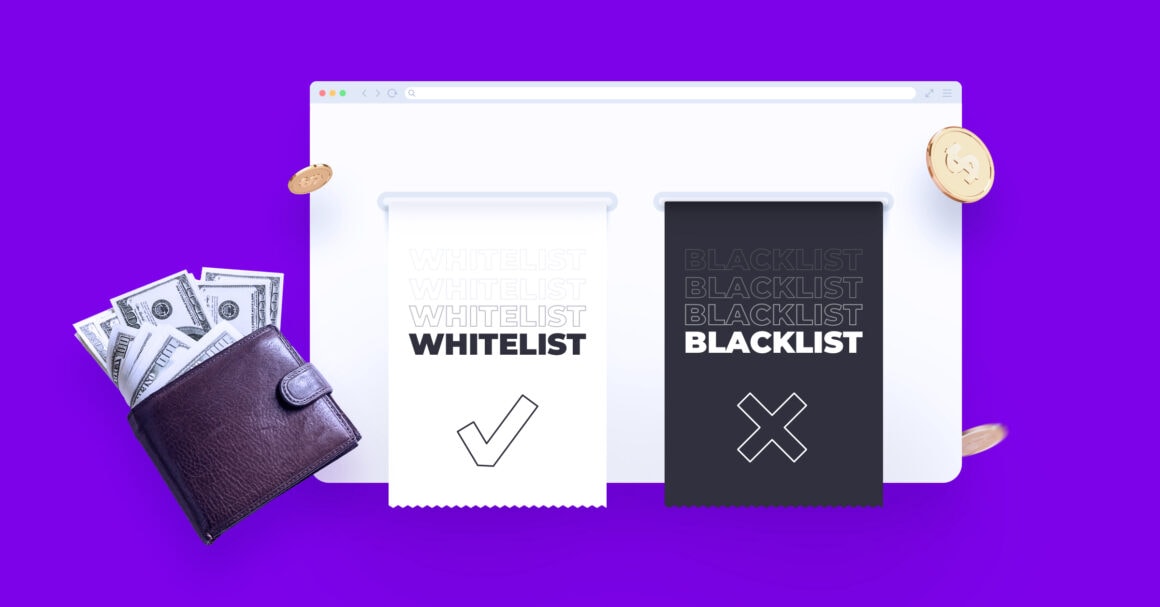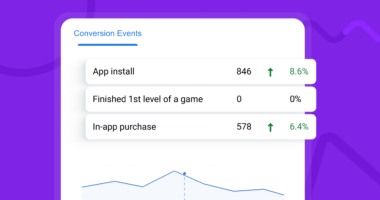Making sure your ad appears in the right place at the right time is crucial – we all know that.
And tools like whitelists and blacklists can help do exactly that. Essentially, they are the heart of the optimization process and are absolutely necessary if you ever want to maximize your ROI.
Mastering how to determine which targets to include and which ones to block can be a bit of a challenge, especially when taking your first steps in performance marketing. That’s why in this article we want to clear the air around blacklists and whitelists, discuss how they can be implemented, and how they can improve your performance as a digital marketer.
Let’s nail down the basics first!
Whitelists and Blacklists: What are they?
In simple terms, a whitelist is a list of specific placements where you want to exclusively get traffic from. Such a list can be rather general and consist of particular websites/apps or it can be super granular and include specific placements. Whitelists are generally used to group high-performing sources together.
While whitelisting is all only about targeting certain placements, blacklisting is about excluding specific sites, apps or placements. Basically, if there is a particular source that has yielded negative ROI for your ad campaign, or if it doesn’t match your target audience, then you can blacklist it.
What are the advantages of using Whitelists and Blacklists?
👉 Money & Time Saver
The most obvious benefit: whitelisting or blacklisting traffic for your ad campaigns allows you to invest only in the most profitable placements that show the highest level of user-engagement, leaving behind sources that aren’t worth your attention and money. In this way, you not only increase your testing budget for the new campaigns but also save your precious time.
👉 Brand Safety First
For sure there are some places you want your ads to be shown, and some places you prefer to stay away from. Imagine that you’re running a campaign promoting antivirus software and it shows up on a torrent site. It could give your potential customers the idea that your product has been obtained illegally. With whitelisting/blacklisting you can avoid such situations.
👉 S-c-a-l-e
Once you’ve whitelisted top-performers or blocked unnecessary sources that dragged down campaign performance, you’re able to start your scaling adventure. As long as you do it wisely, the more you invest, the more you’ll be able to get out of it.
In short: whitelists and blacklists are the reflection of your experience gathered from analyzing your campaigns.
How Can You Create Your Own Whitelist or Blacklist?
No matter how you want to build your whitelist or blacklist, you should first launch your campaign in an ad tracker like Voluum for a few days to gather data on all placements that are available on your ad network.
Not sure why you should do it? Native ad campaigns are built from a number of elements, not only the offer, so it’s crucial to get to know and understand your specific target audience first by testing different images, headlines, landing pages, etc. Keep in mind that past experience and insights are invaluable, but traffic can get really unpredictable.
Think about it this way: it’s just like trying on new clothes. One small element such as color, cut, or current fashion trend can change your mind about the piece. Moreover, all these elements depend on many factors such as geo, type of clothing, price, and so on. That’s why most of us prefer to try on and test clothes before making a final purchase.
Only when your test campaign is launched and you’ve gathered some data, you can start to think about whitelists and blacklists. There are two ways you can do that:
→ Manual: Generally, digging deeper into your campaign reports is a hard yet very effective and reliable way to create a list. Performance-wise it is definitely much better than targeting blindly. Fortunately, Voluum has a robust reporting engine that helps you to quickly outline a report that shows which sites or placements work.
Most traffic sources send information about placements (banners, widgets, sites, publishers – they use different names for that). Create a report where you can see the performance of placements. Use sorting options to display only the performant or non-performant ones. Then you can copy placements names or IDs into any spreadsheet software such as Microsoft Excel. Most traffic sources and trackers, including Voluum, accept lists in the CSV file format.
→ Automatic. You can use Voluum auto-rules to define conditions (for example: ROI<0% in the last 3 hours to identify bad placements) and populate lists with placements meeting these criteria automatically. You can then export these lists to CSV and upload it to your traffic source to use in your future campaigns OR use rules again to apply these lists. The second option is interesting because some ad networks don’t support whitelists (as they don’t want to limit your spending) and Voluum auto-rules can substitute this missing feature.
Use the rule library if you don’t know which criteria to set or follow your instinct. You can use different metrics for your rule conditions (ROI, CTR, CR) and time frames. Experiment with the settings to catch placements that you need.
There are also many additional ways of collecting whitelist/blacklist data. Here are the most common ones:
- Do some research – it’s the key to progress. Use spy tools, read industry news, articles and stay up to date with the latest affiliate marketing trends or insights you can find on community groups or forums. Just remember that not all data is available in spy tools, not to mention that you can get distorted data due to landing page protection scripts and mixed data from DSPs and direct sources.
- Subscribe to some industry newsletters and receive the most recent data updates to your inbox.
- Reach out to your traffic source or ad platform representative and ask if it’s possible to get some additional hints.
When creating a whitelist/blacklist don’t forget to take into consideration some key aspects like the:
- Ad format you want to run your campaign with
- Vertical of your offer
- GEO (country/region) that you plan to target
- Budget for you campaign
- Other offer details and restrictions (device type, mobile carrier, etc.)
Remember that the more insights you have on your campaign, the more tailored and suited the list can be.
Whitelisting vs Blacklisting Strategy: Which One Should You Choose?
If you are not sure what strategy to use, one of the proven ways to find the best approach is to combine them and run both whitelist and blacklist campaigns on the same traffic source. By doing so, you are simply increasing your chances to scale effectively.
There are many reasons why affiliates like to follow this strategy. First of all, by excluding the whitelisted placements in the blacklist campaign, they can avoid self-competition and make sure that their campaigns are not bidding against themselves. What’s more, when running a blacklist campaign, they can still discover some new high-performing placements that could be added to the sister whitelist campaign.
The Bottom Line
Now you have the theory, it’s time to put it into practice! The tips above should help you identify the areas that deliver the best performance and implement them into your ad strategy.




